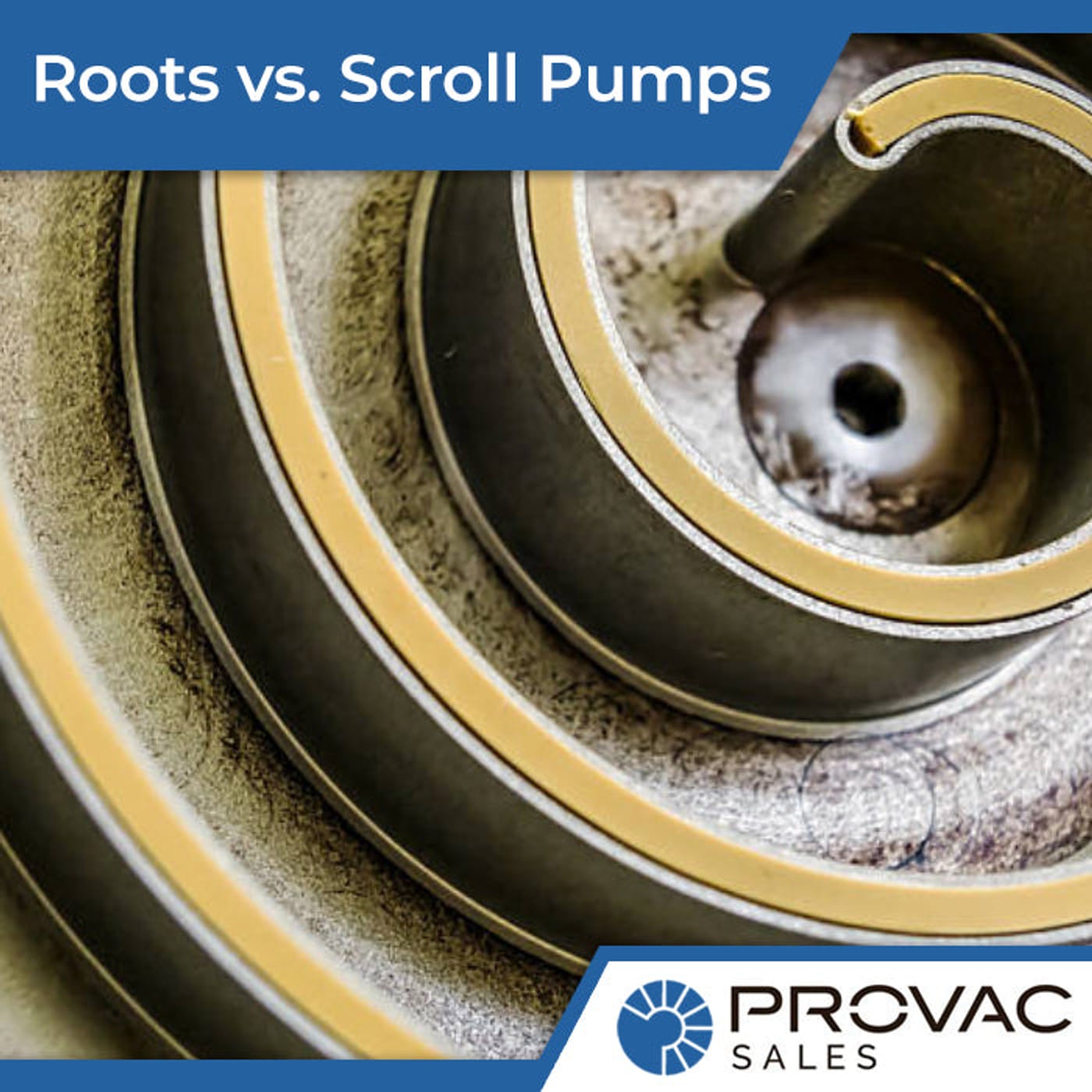Roots pumps, or Roots blowers, are rotary displacement dry-running rotary vacuum pumps, and they can be either single- or multi-stage.
A Roots pump has two counter-rotating rotors that function synchronously and without contact, all within a single housing. The rotors are set up and configured in a figure-eight, and a small gap separates them. The rotor shafts have between 4 and 6 pairs of rotors. The rotor cavities are separated from each other by a stator disk containing a gas orifice. The gas that passes through is pumped from the inlet port and is pumped out of the outlet port.
With regards to the shafts, one is driven by a motor, while the other synchronizes with a timing gear within the gearbox. Only the gearbox and the encapsulated high pressure and low-pressure bearings are lubricated. The shaft seals closes the bearings off from the suction chamber.
The lack of friction in the suction chambers allows the Roots pump to operate at extremely high rotational speeds, even up to 6,000 rpm. Moreover, the rotor mass is symmetrically distributed around the shaft axis. This gives the pump perfect dynamic balance, resulting in extremely quiet running, even at very high speeds.
Scroll Pumps
Scroll pumps operate differently than Roots pumps. Scroll pumps have two orbiting scroll plates, which compress gas in between the scroll channels. This type of pump does not utilize oil, which can leak, spill, or infiltrate the vacuum system. This also prevents the risk of the entire vacuum system experiencing hydrocarbon contamination. The most essential quality of scroll pumps is a reduction in environmental pollution.
Lower Ownership Costs, Less Downtime
While traditional pumps demand extensive and time-consuming scheduled maintenance, scroll pumps are much easier to maintain. For instance, scheduled maintenance involves a simple seal replacement, which only takes about 15 minutes. Additionally, the seal replacement process is an infrequent maintenance requirement; Agilent solid tip seals are designed and manufactured to last up to 3 years.
Since dry scroll pumps do not require oil maintenance, there is no need to worry about oil spills and leaks, or the hazardous process of disposing of used oil. At the same time, the pump does not suffer from pump seizures.
Easy Installation and Simple Integration
Scroll pumps are designed and manufactured to be lightweight, compact, and energy-efficient. These qualities make it easy to integrate the pump into any system design. These pumps do not require any special voltage, nor do they place a burden on utilities. Scroll pumps also used with standard IEC power cords, which are never hard-wired to motors.
Fail-Safe Integral Isolation Valves Negate the Risk of Accidental Contamination
While this is an optional valve, it does come in handy to prevent sudden venting and backward migration. The valve is installed in the module, adding no height to the pump inlet.
How the Isolation Valve Works:
- A spring holds the valve open under normal conditions
- In the event of a power loss, the solenoid valve discharges the tiny chamber beneath the valve, which in turn, shuts the inlet valve in about 20 ms
- After power comes back on, the solenoid closes, and the pump evacuates. The valve then opens in about 10 to 30 seconds
Recover Process Gases, Negate Toxic Gas Leaks
Certain model scroll pumps, such as the Agilent IDP series, use a hermetic design, whereby the bearing and motor assemblies are located outside the vacuum space and are at atmospheric pressure. This isolates the pumped gases completely. This design forms a closed system within the pump that is well suited for helium recirculation and pumping area gases.
Protect Your Equipment and System from Vibration Damage
Agilent’s IDP-15 scroll pumps come with a set vibration isolation feet that not only dampens pump vibrations, but also decouples the scroll and motor vibration from the pump’s mounting brackets.
For help determining the proper pump for your application, please contact us, and we can discuss your options to determine the best solution for your needs.





